Viofo A139 Pro Dashcam Review
A screen-less 4K dash cam, available bundled with either a rear-view or interior camera
Verdict
The Viofo A139 Pro is a strong 4K dash cam. Its daytime footage is crisp and clear, making it easy to pick out number plates and other details even when there’s quite a closing speed – it’s not bad at night, either. The Full HD rear camera isn’t as good, but it’s certainly not bad, especially in daylight. This dash cam’s support for both interior and rear-view cameras might make it an excellent choice for cab and commercial drivers, but in this two-channel bundle it’s ideal for private drivers looking for a good value 4K system.
Pros
- Great video quality
- Competitive price
- Easy to mount and remove
Cons
- No advanced driver safety or SOS feature
Key Features
- A 4K dash cam with HD rear cameraVery high resolution front footage, with full-HD video to the rear
Introduction
The Viofo A139 Pro is a screen-less dash cam, available bundled with either a rear-view or interior camera.
I’m testing the rear-view bundle, which pairs the Pro with a Full HD rear camera. You can’t buy a three-channel bundle (front, interior, rear), but you can create one by buying a two-channel bundle and getting the missing camera separately for a reasonable £55.
The Viofo A139 Pro itself has a 4K Sony STARVIS 2 sensor, GPS positioning, built-in Wi-Fi and a parking mode, but it doesn’t offer advanced driver aids such as a lane change warning.
Design and features
- Easy to fit and remove, with rear camera support
- GPS positioning, parking mode and a g-sensor
- 4K resolution
Dash cams with 4K resolution are getting cheaper, and the Viofo A139 Pro proves the point. For a little more than £200 you get a front and rear bundle that can film 2160p and 1080p respectively.
Both cameras use Sony STARVIS sensors, specifically developed for good low-light performance. The A139 Pro doesn’t have a screen, but it’s otherwise fairly well specified. It’s worth stressing that this ‘Pro’ model is distinct from the standard Viofo A139, which has a lower 2K front resolution.
Fitting and removing dash cams can be a pain, but the A139 Pro is one of the better examples. It comes with a large electrostatic sticker that fits to your windscreen, and the camera mount sticks to that. That makes it a lot easier to remove and reposition, but alas the rear camera just has the usual sticky pad.
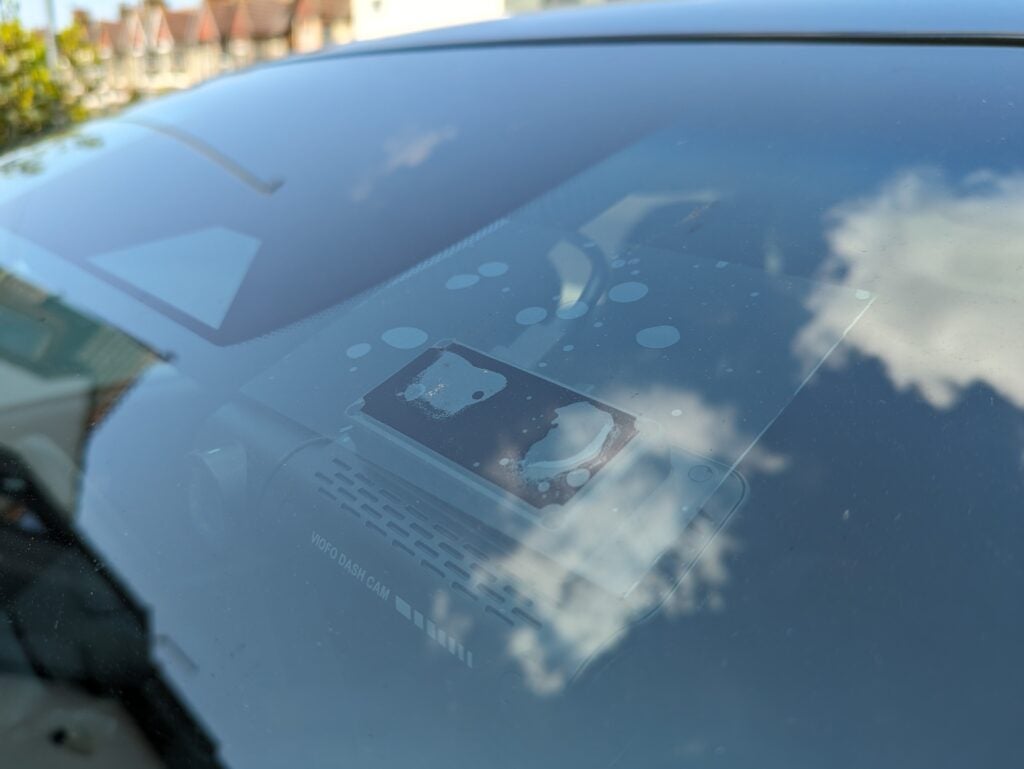
This isn’t the smallest or most attractive dash cam I’ve tested, but its main body is a fairly slim wedge shape. The camera itself is carried in a circular sidepod that rotates through almost 300°. Not only does this allow for any windscreen angle, Viofo even says you can twist it fully round for vlogging, if that’s your thing.
There are an unusually large number of buttons, indicator lights and connectors, but if you’re like me you’ll set the camera up once and never meddle with them again – unless you need to protect your recordings with the hazard button in the middle.
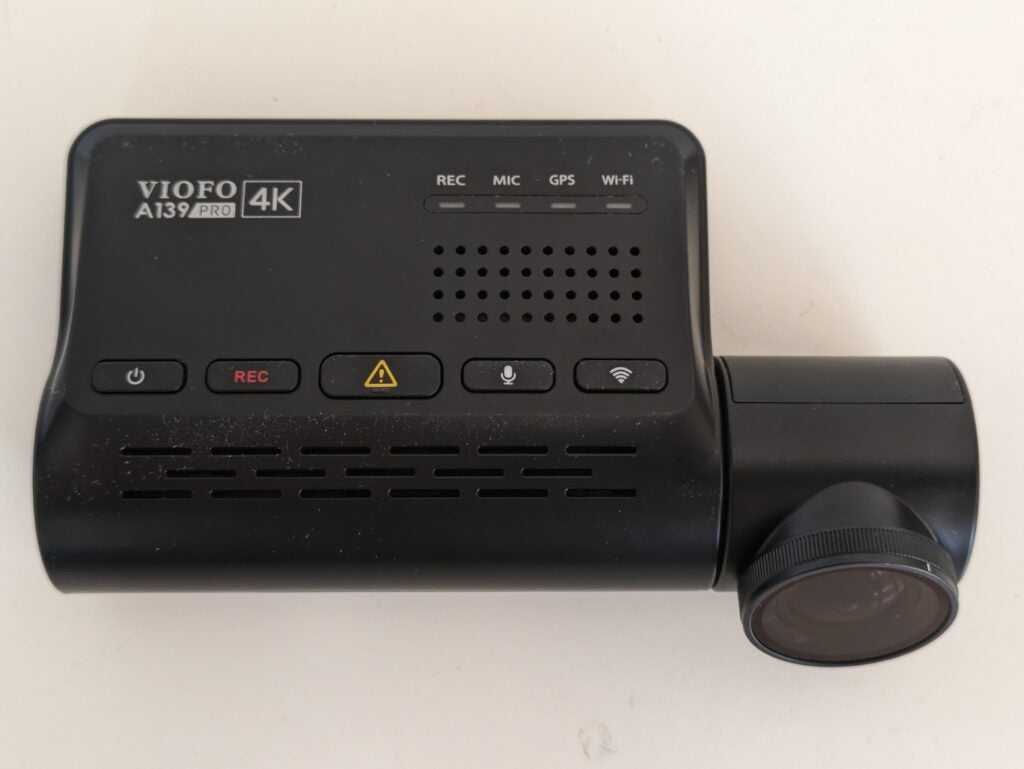
Viofo supplies the usual cigarette power adaptor. In this case it’s a dual-USB type, which helpfully leaves you with an extra USB power port.
The rear camera is connected by a long, thin miniature coaxial cable. I managed to mount it upside down, but fortunately, you can invert and flip the picture in the settings.
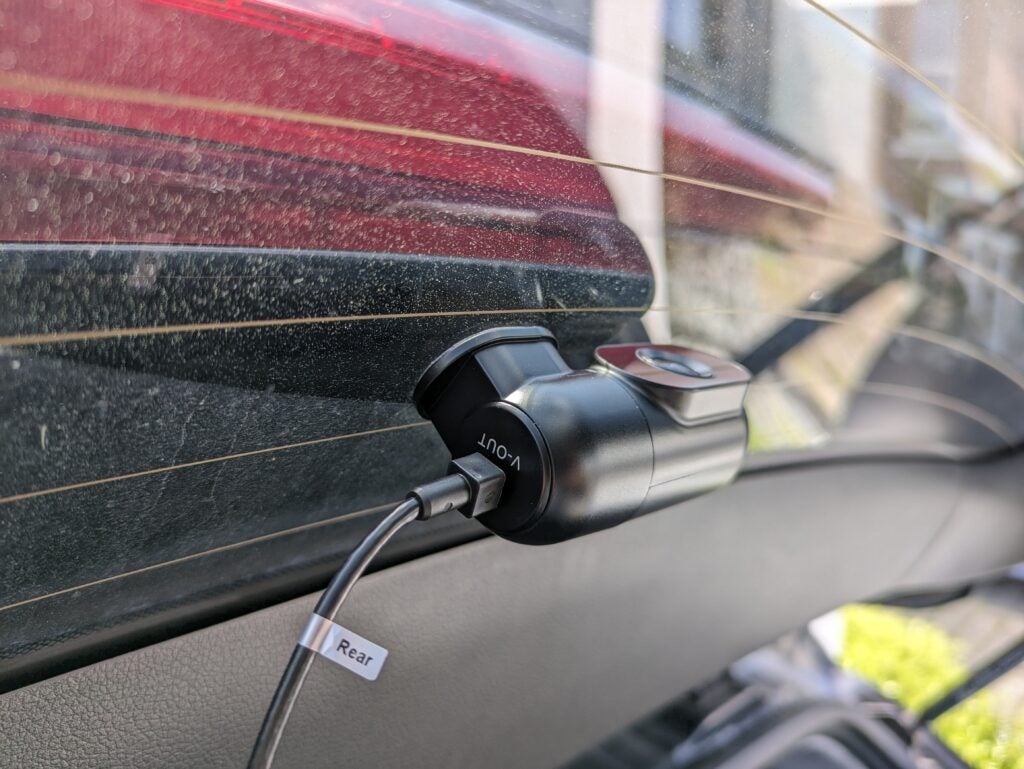
The settings are only accessible via Viofo’s smartphone app. This isn’t at all bad, providing a live view and letting you browse your recordings, but it does mean you’ll need a phone to configure the camera.
The live view helps you fine-tune both cameras’ aim in the absence of a screen, while you’ll want to use the comprehensive settings to turn off the incredibly harsh sounds upon startup and shutdown.
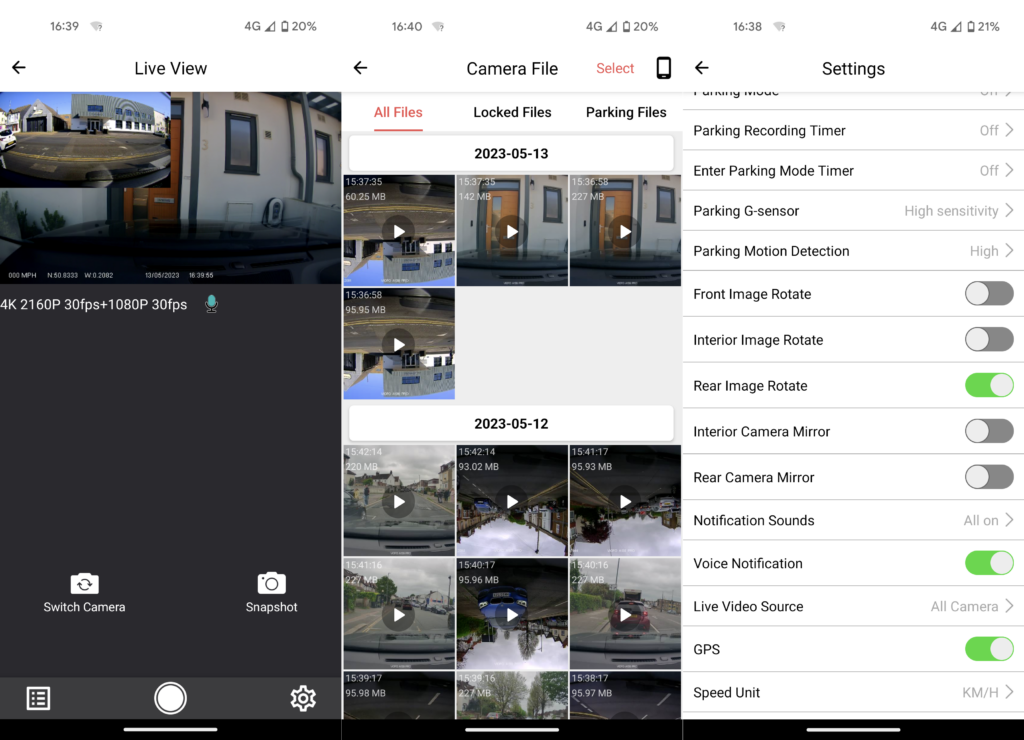
You might find the app’s file view feature handy, but personally I prefer browsing through recordings from a computer. Fortunately, it’s easy to remove the memory card and do just that. Viofo doesn’t supply one, but the camera supports MicroSD cards up to 512GB.
The Viofo A139 Pro covers a 140° angle, which is enough to capture almost anything relevant as you pass by. The rear camera covers a huge 165 degrees, capturing almost the full width of my car’s rear screen.
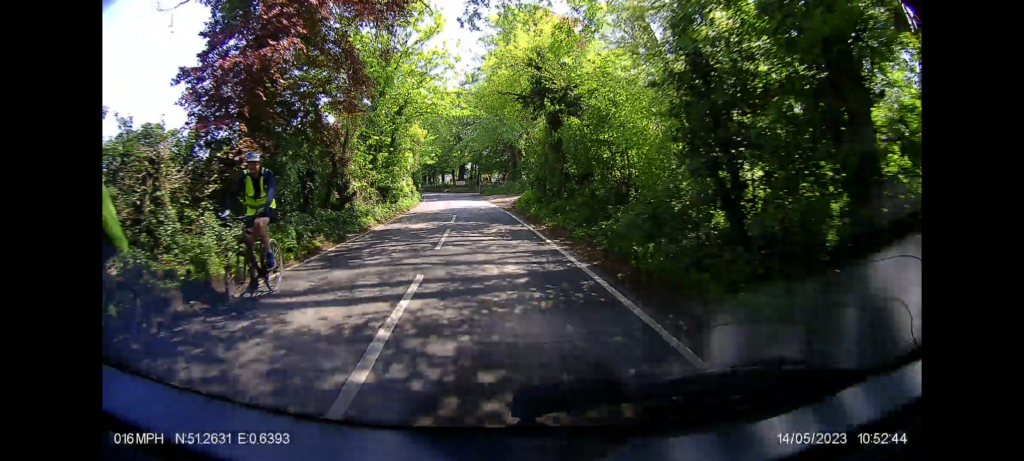
Performance and video quality
- Excellent front video quality
- Easy to live with
- Needs a big memory card
I tested this camera during late spring, in a mix of sunny and filthy weather. Front-facing video was excellent in all conditions, somehow appearing smoother than normal for 30 frames per second.
Footage had an excellent dynamic range, capturing both the detail of expansive blue sky and harsh sunlight, and shadowed areas of the road. Similarly to the Road Angel Halo Pro bundle, I found it easy to make out number plates even when there was a reasonable speed differential.
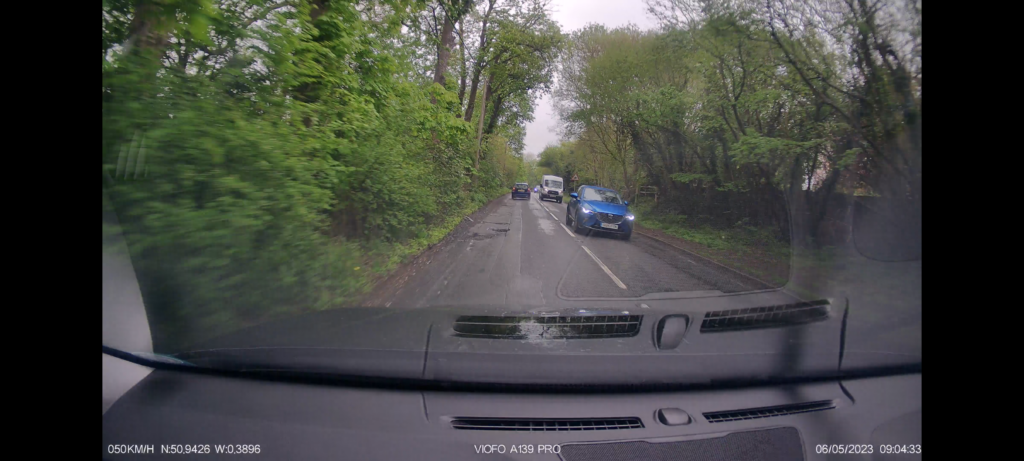
This camera comes with a push-on circular polarising filter, which helps remove cabin reflections in bright conditions. On sunny May days it really proved its worth.
Rear-facing cameras usually aren’t as good as their front-facing master unit, but Viofo’s is much better than average, especially in the daytime. Like the front camera, it dealt excellently with dappled sunlight and high-contrast scenes, although I found myself wishing it also came with a polarising filter.
Unusually, rear camera footage is stamped with the same speed and GPS coordinates as you’ll find on the front footage – in theory, this could make it more acceptable as evidence.
Given the rear camera has a good quality STARVIS sensor, I was a little disappointed in its night time footage. It captured the shape and colours of vehicles, but I struggled to make out many number plates from parked cars, even when aided by the reflection of my brake lights.
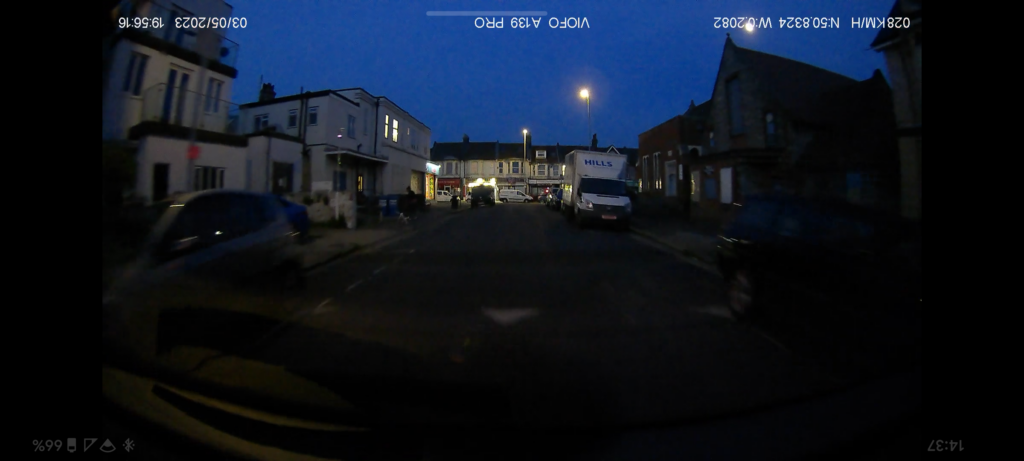
The front camera had no such problem, nicely exposing the streets on my city block test. It’s particularly hard for dash cams to capture number plates, which are highly reflective and tend to wash out as soon as they’re hit by your headlights. That said, I had a good hit rate with this camera, which was almost as impressive as Road Angel’s Halo Pro and Halo Ultra cameras.
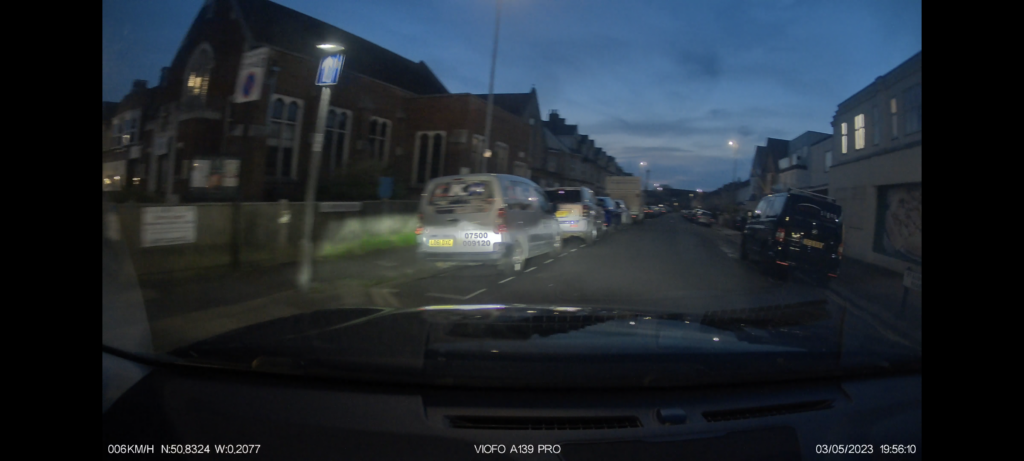
Dash cams normally do a good enough job of capturing the cabin audio if you’ve got the feature turned on. The A139 Pro wasn’t phased by music or the chattering of my kids, but it seemed to hate the ticking of the indicator in my quiet, stationary car: adjusting the volume right down and interspersing it with soft white noise. It seemed to fix itself again as soon as I drove off. Unusually, this camera has ports for an external microphone and an AV output.
Viofo supplied a 64GB memory card for my testing, which highlighted one potential issue with the A139 Pro’s high resolution filming. The front and rear cameras together eat up more than 300MB of storage for every minute they record, filling this card and overwriting the oldest footage after less than four hours’ driving.
Unless you only ever drive in-town, I’d recommend at least a 256GB card, which should prevent old footage being overwritten on a long round journey of around 14 hours. That said, if something does happen and the built-in g-sensor doesn’t detect it and automatically lock the recordings, you can simply press the hazard button to do it manually.
Latest deals
Should you buy it?
You want great video at a decent price:
This dash cam offers great video quality, especially to the front. It’s good value, too
You want to save cash:
4K footage is nice to have, but 2K systems are cheaper and usually good enough
Final Thoughts
The Viofo A139 Pro recorded video to almost match the best I’ve seen, particularly by day. It’s certainly capable of capturing the detail you need to show you weren’t at fault in an accident. I like this camera’s slimline profile, its thin front-to-rear cable, and its two-port USB power adaptor. I was also glad of its polarising filter as the sun blasted down.
Overall it’s a good choice – at a good price – if you’re after very high resolution video front and back. That said, a good 2K camera bundle is cheaper, and would also usually get all the detail you needed.
How we test
We test every dash cam we review thoroughly over an extended period of time. We use standard tests to compare features properly. We’ll always tell you what we find. We never, ever, accept money to review a product.
Find out more about how we test in our ethics policy.
Used as our main dash cam for the review period
We take sample video during the day and night to see how good the footage really is.
We test any smartphone apps to see what additional features are on offer.
We test any additional safety features, such as lange change warning, to see how useful they really are.
FAQs
The short answer is no, but in most circumstances you’ll get better footage, or footage that’s no worse. The exception is at night, where any filter reduces the amount of light coming into the camera. That’s a bad thing if it’s already struggling to resolve detail in the gloom.
Generally speaking, I’d recommend using the polarising filter if your dash cam comes with one. It’ll usually make a big improvement to your footage, particularly in harsh and overhead sunlight. However, if it’s removable, you might consider taking it off if you’re doing a lot of night driving.